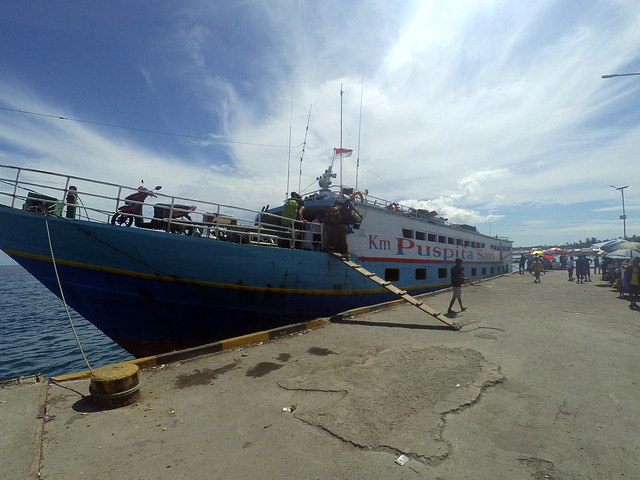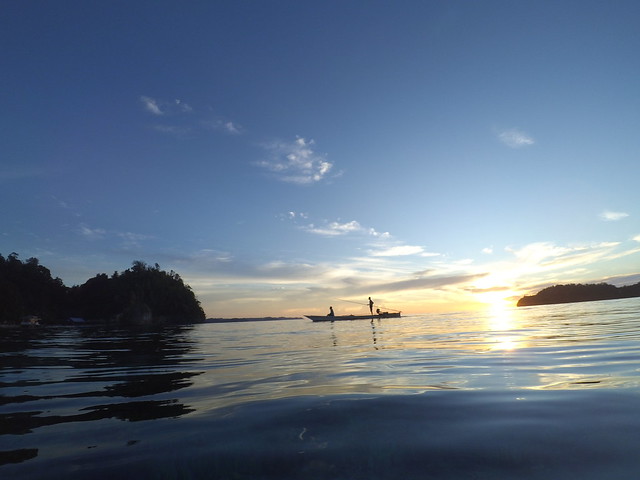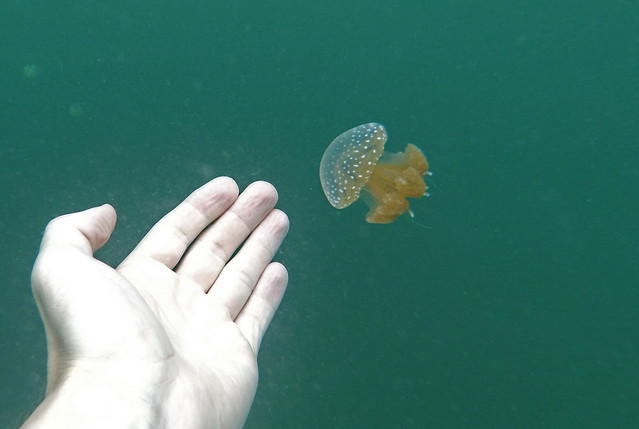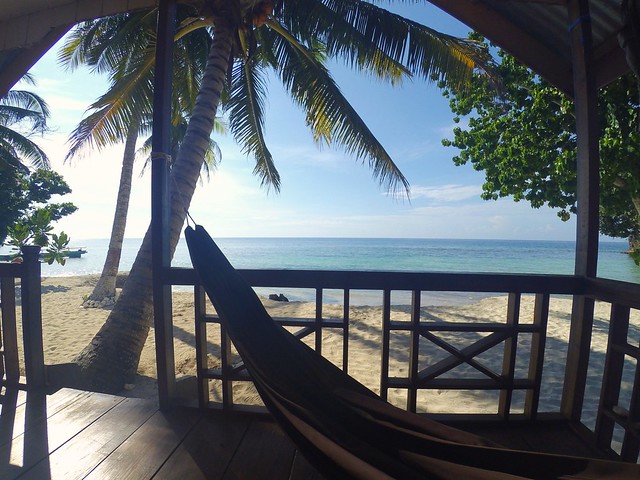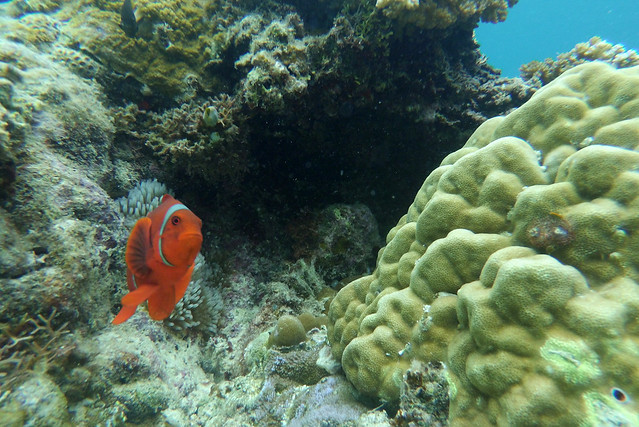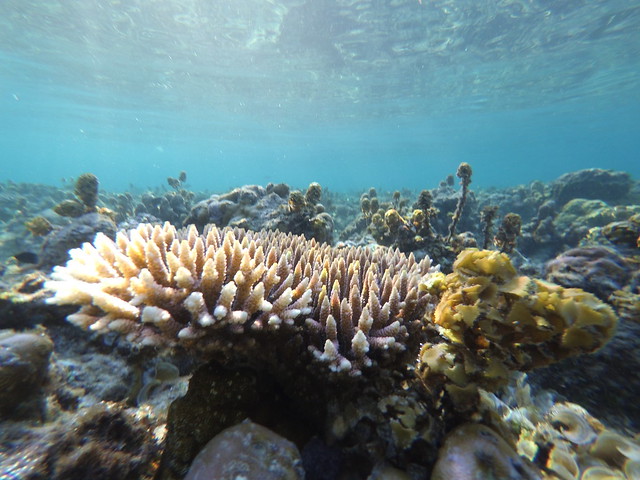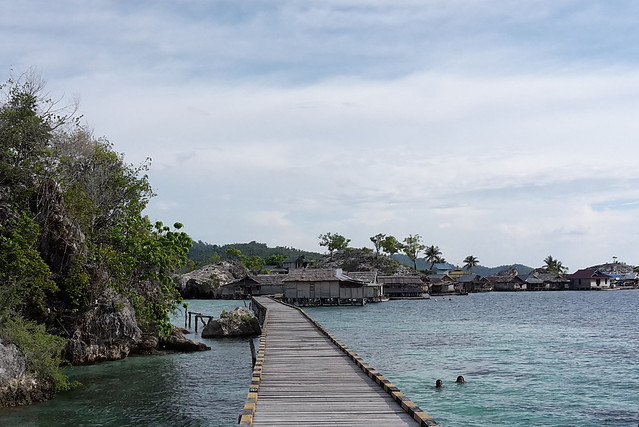The Lonely Planet claims that getting to the Togeans is difficult, but leaving this archipelago is even more difficult. And it is true: These islands are a secluded paradise, located in the middle of the giant lagune formed by the awkward half island that protrudes from the north of Sulawesi. It took me a full day by minibus to get from Palu to Ampana, and more than half of the next day to take the boat from there over to Wakai (the main village of the Togeans) and a smaller boat on to Kadidiri, a close by island.
Here the second part of the guidebook’s prediction did not quite come true for me: The place I stayed at was not very well kept, the owners a little harsh, the food did not live up to Indonesian standards, and it was quite crowded actually (normally this time of year is low season, but with the eclipse festival in Palu many tourists had come to Sulawesi and, like me, continued on to the Togeans). I met some nice people though, went for a hike up a forest-covered volcano on another island, and for a swim in a jellyfish lake.
But I decided to leave again when I got the chance (the boats are not running every day). Travelers had told stories about this island group: about beautiful beaches, fantastic snorkeling and diving, amazing food, and it was supposed to be very calm and quiet. I did not want to give up that dream quite yet, so I took the boat further into the archipelago, and got off at Malenge, about two hours from Wakai.
With me a big group of western tourists left the boat, heading to the only place described (and praised) in the guidebook. Not really the way for me to go then… So when I was approached on the pier by a friendly looking Indonesian who advertised for “Malenge Indah”, another resort with good conditions, I saw my chance and followed him. Me and one more guest who had arrived with the ship were taking another much smaller boat to the opposite side of the island. And by the time we arrived at a quiet beach it had already gotten dark. It was really quiet, I realized: Only five other guests were there, having dinner when we jumped on land.
After a quick shower our dinner was ready as well, and what a dinner it was! Grilled fish fresh from the sea, with a variety of deliciously prepared vegetables, soy protein, fruit and, naturally, rice. A meal for a king, it felt like (even if I had not come from Kadidiri).
The next morning the other people left, and we were only two guests remaining, with the friendly staff of the place. The cook nonetheless put the same effort into creating amazing dishes, and we got fresh fish for lunch and dinner!
Sitting on the veranda of my bungalow or lying in the hammock I had a great view over the quiet bay and onto a calm turquoise ocean, and would only occasionally get up for some beautiful snorkeling. This was absolute bliss – the only time during my travels where I relaxed completely and did not do anything for several consecutive days.
(You can find a snorkeling and diving video in this post)
Well, almost nothing: One day I went to another beach to collect mussels with the staff, and another day we visited a bat cave in the rainforest and then continued to a local sea-gypsy village.
Malenge really became my dream island, and I was very reluctant to leave. But at this point I had less than three more weeks in Indonesia, and I still wanted to see more of Sulawesi, as well as go to other islands. So I left paradise – which indeed proved to be difficult, also transport-wise: At around five o’clock in the morning I had to be brought back to the pier by the same small boat, then it took three hours to Wakai, a long uncoordinated break there, and four more hours until I arrived in Ampana in the mid-afternoon. Back to classic busy Indonesia (that’s what it felt like, although Ampana is actually just a small town) with zooming motorbikes, loud bus and taxi drivers, street vendors, supermarkets and atm’s…

